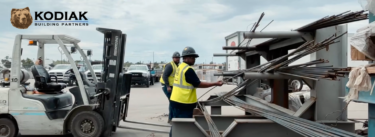It would be impossible to find a valid description of lean that does not include the importance of 5S for organization, standardization, and continuous improvement. Originally applied in manufacturing, 5S is now being applied broadly in many industries including healthcare, government, and software. As Taiichi Ohno said, “Without standards there can be no improvement.” I have been a lean practitioner since the early 1990s and my niche as been focusing on developing the lean management system beyond manufacturing. I understood the importance of 5S early on. But it took a series of personal insights for me to fully appreciate 5S application beyond manufacturing and the need for deep 5S thinking.
In my initial experience with lean, our company did not learn about 5S from our lean manufacturing coaches until after more than a year into our lean journey. We had started with process flow and by the time we were introduced to 5S, we had our entire product portfolio organized by seven product lines (or value streams) with each product being manufactured in one-piece flow to the demand rate of the customer.
So, it surprised me when I visited companies who initiated their lean efforts with 5S both in manufacturing and their company-wide lean management system. My first experience with this singular focus on 5S as a standalone activity was with a company that had decided that everyone in the company had to be “doing lean,” and 5S events were their means to adhere to that decision. The result was office people cleaning up and creating taped off desk areas and labeling of files. As important as it is to use the 5S techniques, one primary goal of lean is to actually eliminate activities that do not support customer value. It was a pretty long stretch for me and some of their employees to appreciate that taping off desks and cleaning up areas was creating customer value, and in turn caused the new focus on lean to seem trivial to many people.
Later on, I was talking with a CEO who had committed his company to lean and had hired a consultant who started their company off with 5S events. I told him about the 5S quandary I had observed and asked him what he thought about this approach now that they had started and were committed to this direction. He said that initially he was very concerned that the results would not flow to the customer, but that concern evaporated when he saw that the teams, while cleaning up and creating standards in 5S events, were also taking action to reduce waste in many of the processes. (He also said he continued to be eager to get to the “real lean” activities. J)
As a critic of starting with 5S, this was an important perspective for me to hear. I knew it was true that more people could get involved quickly when starting with 5S than when focusing entirely in manufacturing to create one-piece flow cellular product lines. But I hadn’t calculated in empowerment. If those implementing 5S were also empowered to make changes to the processes, a company could launch the power of the collective genius of more people early on.
As occurs ongoing with my thinking and practice of lean, I was evolving to see 5S in a broader light. Since most of the work I did with lean practice was in the office areas, we often built a process map to “see” the work (See “Reducing Waste and Ignorance” eLetter). We used the process map to identify value add and waste, and then we would identify experiments to solve found problems. As we did this and with my new insights of 5S, I realized we were using the thinking of as well as some practice of 5S during our mapping events in the following ways.
First with SORT (Japanese, seiri), we were removing unnecessary items, the steps in the process that were no longer needed. Ironically, this was often by eliminating the sorting of the work by taking out excess checks and steps that were no longer necessary.
Second with SHINE (seiso), we were cleaning and inspecting. We made sure the information we were working with was current, correct, and reliable. This often entailed removing old forms, personal cheat sheets, and outdated policies. This step also included creating ways to mistake proof, so the wrong information was not added or used in the process going forward.
Third with SET IN ORDER (seiton), we were making workflow smoother and easier. We put the process steps in a more meaningful sequence that created movement of the process, avoiding rework and backtracking. We ignored functional boundaries as much as possible in order to best fit the process to the work. In some cases, this would result in movement of office furniture and equipment, just as in a manufacturing 5S.
(Most literature on 5S has Shine after Set in Order, but in my experience Shine first makes more sense.)
Fourth with STANDARDIZE (seiketsu), we defined responsibilities, created work instructions, and visual controls. We identified what to do with exceptions, created tips for safety and customer customization, and defined how to get help or additional training.
And last for SUSTAINMENT (shitsuke), we created key process metrics, how to improve the process locally, key characteristics for controls or audits, and improvement huddles to discuss process stabilization and continuous improvement.
I know now this is how 5S plays a critical role in a company’s overall lean management system. 5S thinking was far more important that just traditional “doing 5S” practice when considering all areas of a company. It is thinking about creating stable, sustainable processes that provide customer value with as little waste as possible and a means to constantly improve those processes.





